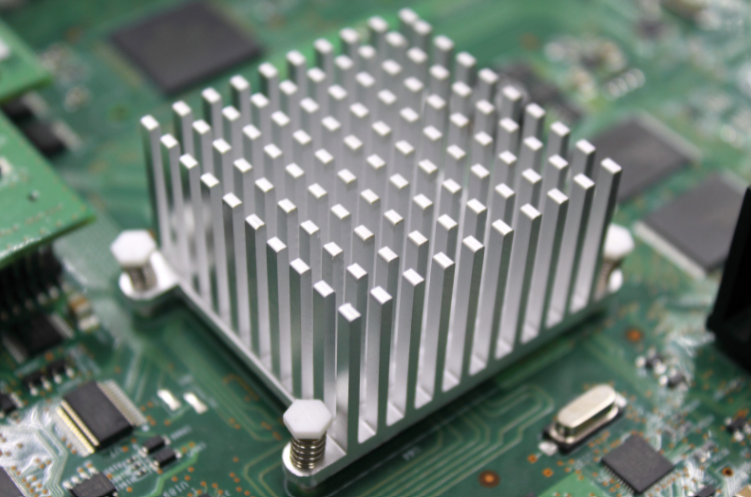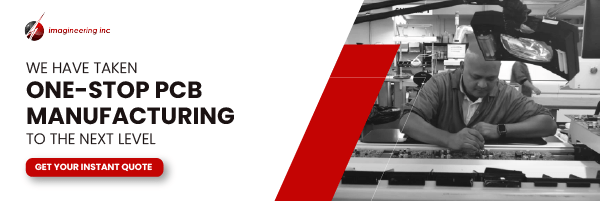As printed circuit boards grow more advanced, designers and manufacturers have begun utilizing every trick in the book to optimize maximum performance out of their hardware. Yet no matter how powerful a PCB is, circuit board design cannot undo the laws of thermodynamics.
A high temperature PCB is designed to perform optimally under the most intense conditions while minimizing impediments to system performance. By accounting for fluctuations in thermal expansion rates, high temperature PCB design can reduce the potential for cracking and connection failures.
The demands of high power-density designs have eclipsed traditional PCB heat-management practices. How are today’s PCB manufacturers finding ways to keep machines functioning even in the most inhospitable environments?
What is a High Temperature PCB?
A high temperature circuit board is generally defined as an instance where the glass transition temperature (or Tg) is greater than 170°C. The glass transition temperature is one of the most important properties of any epoxy, representing the temperature which the polymer transition from a hard material to a soft one. High temperature PCBs should aim for a continuous thermal load around 25°C below the Tg.
When PCB manufacturers design high temperature circuit boards, they must be aware of two things: heat distribution, and materials that are able to withstand extreme heat. Because materials play such a critical role in this type of PCB design, the process is also known as High-Tg PCB manufacturing, and requires expertise in thermal design. Thermal management for proper heat control can also strongly influence cost, weight, size, and power requirements.
PCB Heat Dissipation
The two primary methods of removing heat from a circuit board are convection and conduction. While radiation plays a critical role in thermodynamics, in the context of high temperature circuit boards this mode of energy emission is the least consequential, yet is still present and may be a consideration in the presence of reflective circuit boards.
In high temperature circuit board construction, heat sinks are essential for redirecting heat and keeping temperatures manageable. PCB heat sinks are large, corrugated structures that contain a large amount of surface area ideal for this purpose. Copper or aluminum backing conduct heat away from the heat-generating surface and transfer them to the heat sink. Convection then allows this heat to be distributed along the ridges of the heat sink, often cooled by aid of a fan.
Keeping these principles in mind, a variety of options can be used to increase efficiency of heat management. Liquid cooling systems, larger heat sinks and conductors, and different materials are all considerations that can be made. However, each of these decisions will also influence the end design, making it potentially more expensive, heavier, or requiring more power to operate.
Leveraging Heat Management Technology in PCB Design
High temperature PCB design requires special measures to ensure functionality in extreme conditions. One of the most common strategies for this is the use of materials optimized for thermal conductivity such as “heavy copper” boards. True to their name, these materials use thicker sheets of copper to boost their current-carrying capacity, lower electrical loss, reduce heat generation, and improve heat dissipation. The use of heavy copper PCBs can help lower costs by reducing the number of heat sinks necessary, as well as lowering overall size. However, some debate exists as to whether heat spreading in a thicker copper layout lowers the total thermal resistance.
The use of thermal adhesives can eliminate the need for mechanical fasteners like clips or screws, and can help reduce thermally conductive silicon insulators or gap fillers that isolate a device from a heat sink.
Other material considerations to keep in mind should be flame resistance, chemical resistance, and low smoke and ash formation. Glass epoxy resins like FR4 standard materials have proven invaluable thanks to these qualities, as well as providing electrical resistance and reduced heat dissipation. IS410, IS420, and G200 are some well-known examples.
High Temperature PCB Design Requires a High Degree of Expertise
A higher Tg point equates to a higher temperature requirement during the lamination process, affecting both the printed circuit board as well as its electrical properties. Because of the specialty conditions needed during this process, partnering with experts is highly recommended.
Since 1986, Imagineering has been a pioneer in PCB design, including high temperature PCB design. Every one of our boards meet class 3 standards, the same required by medical, aeronautics, and military applications. Between simple prototypes and complex multilayer projects, we have the resources you need to get the job done – contact us today for more information about our services.


